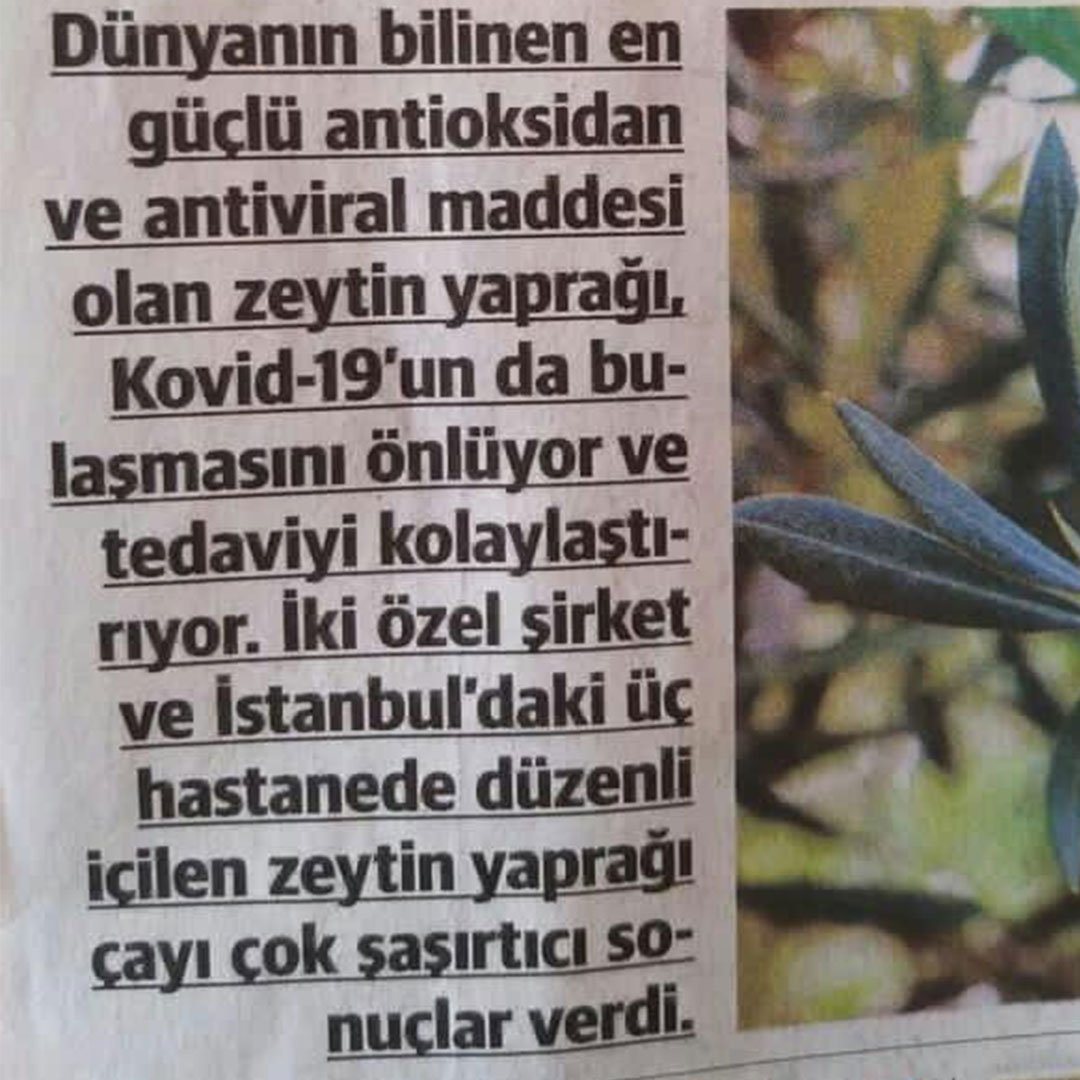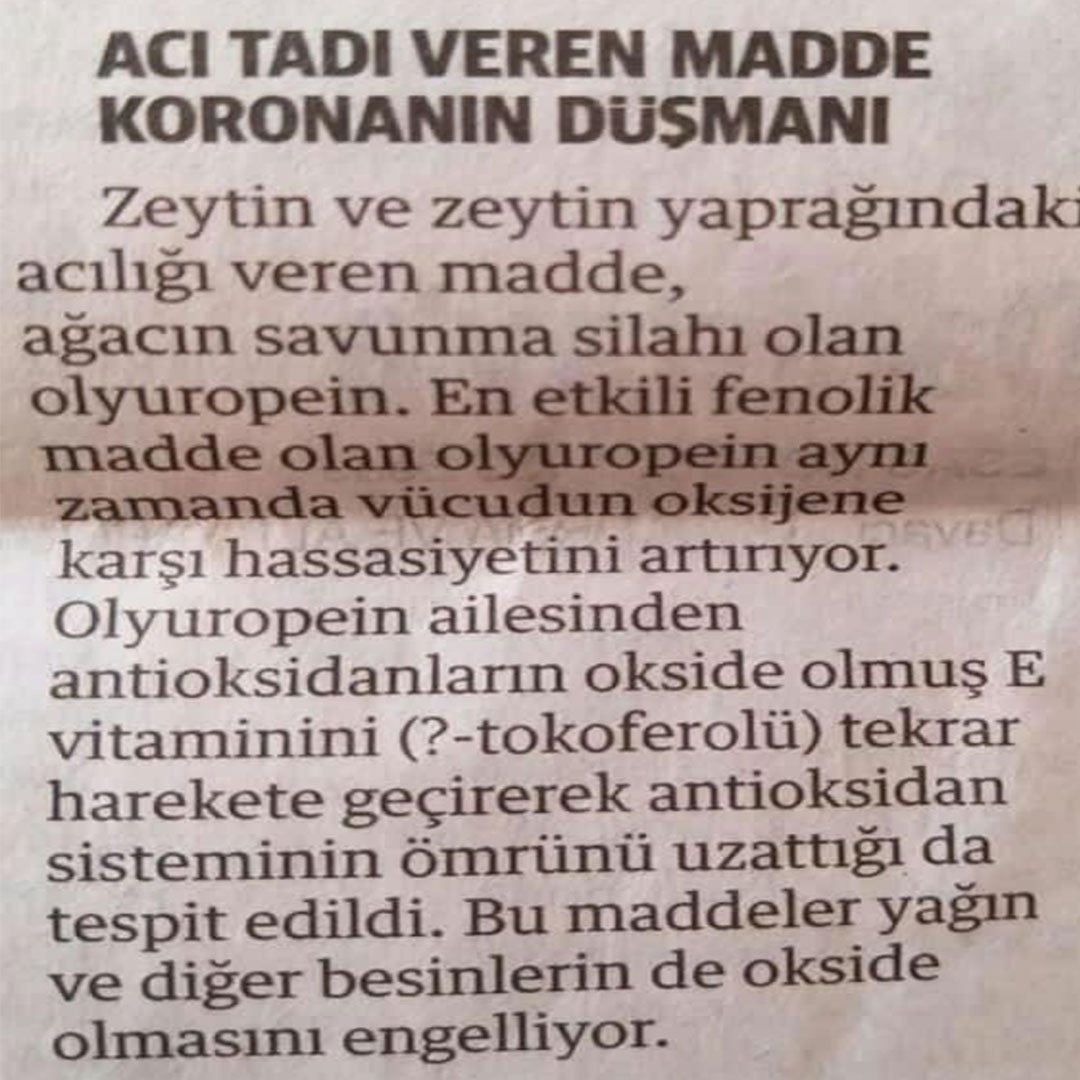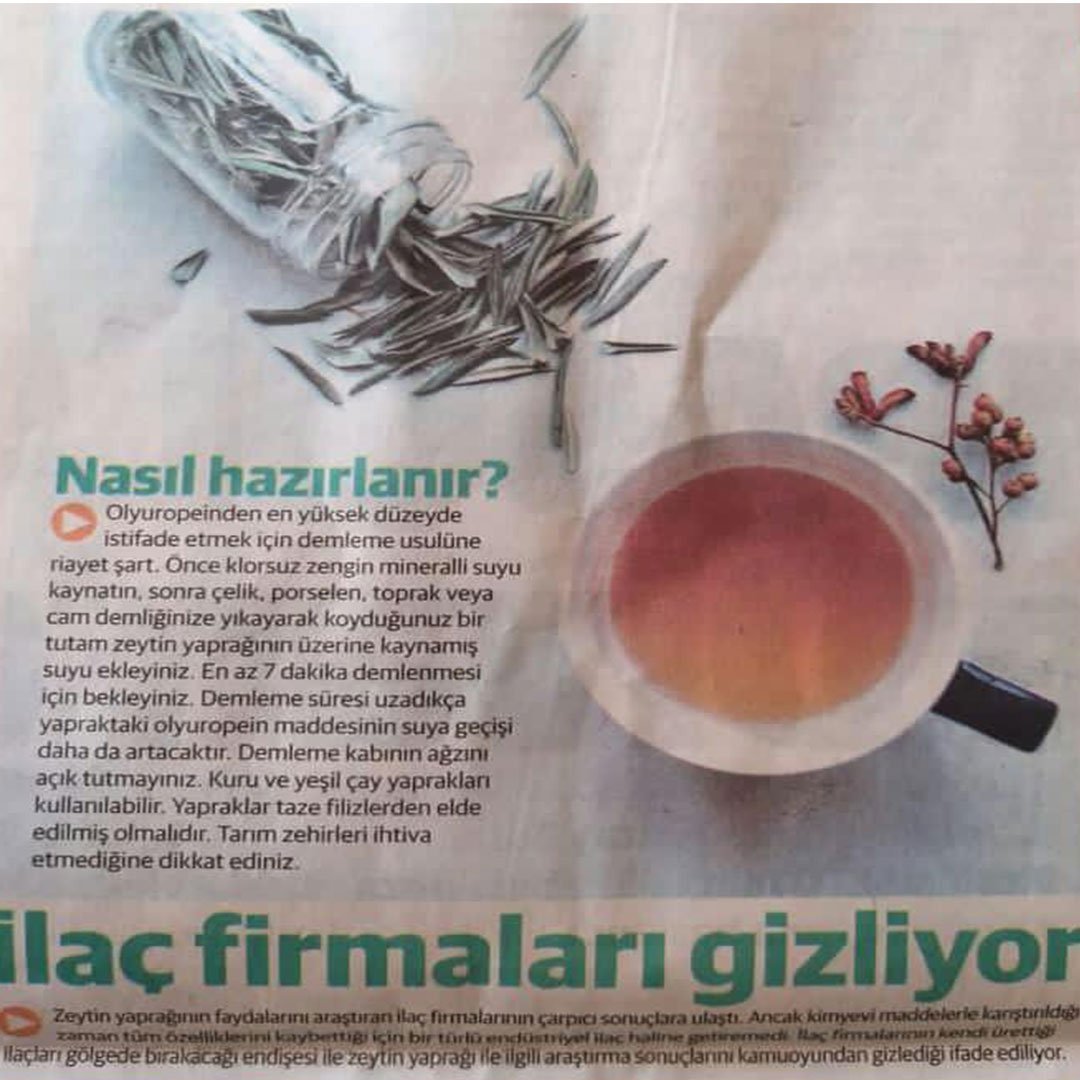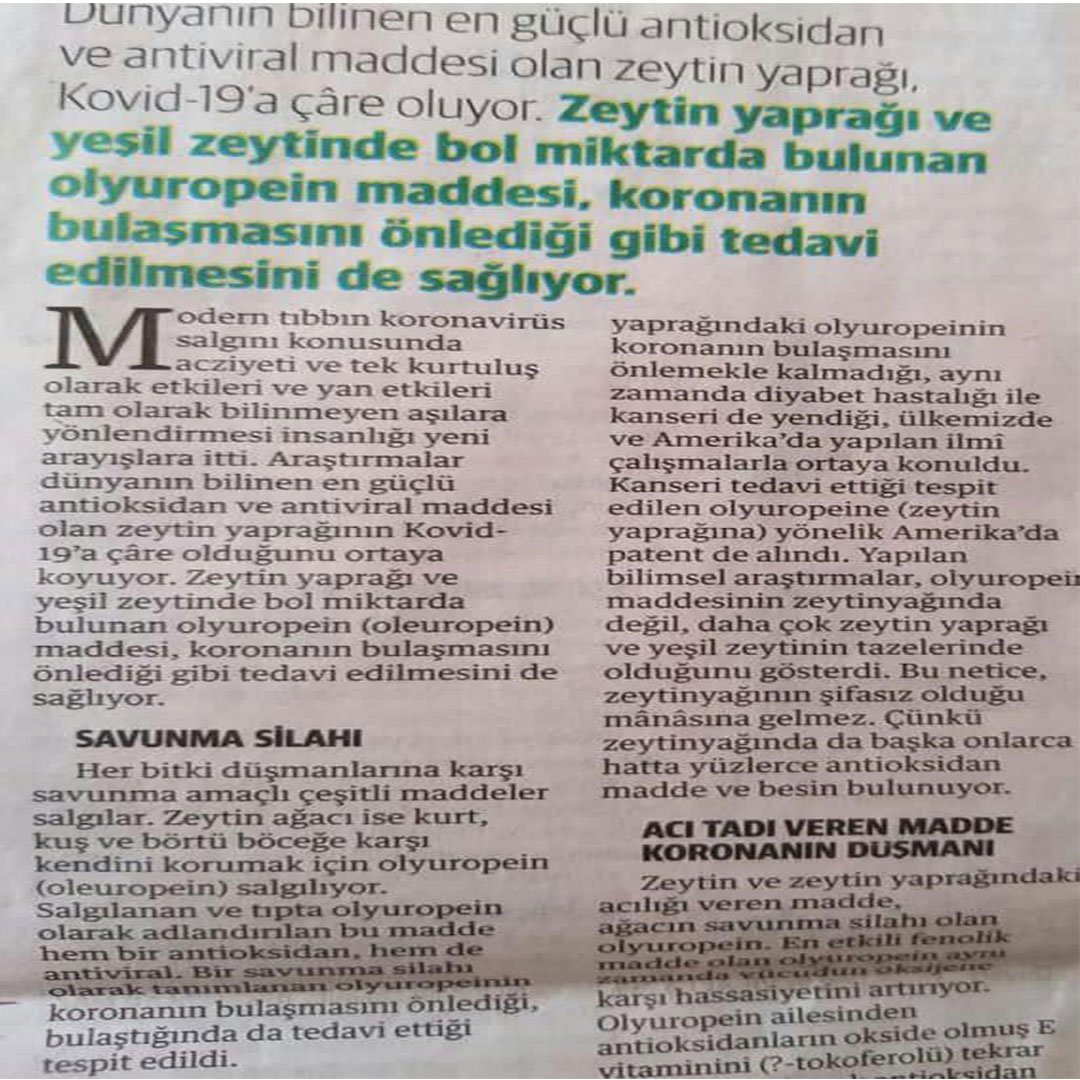Benefits and Uses of Olive Leaf
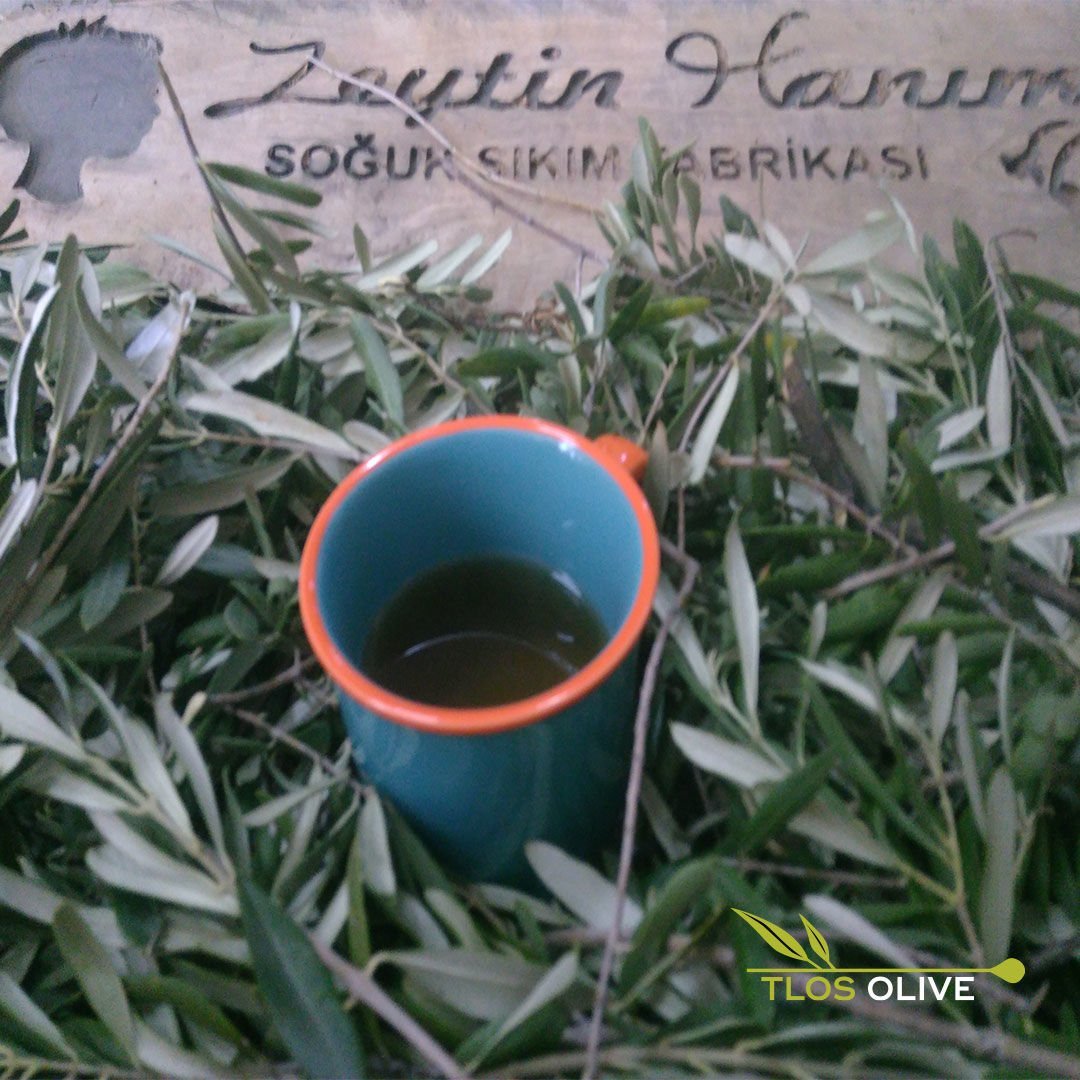
The olive tree, a tree unique to the Mediterranean region, is leafy all year long. The tree is mostly short and rarely reaches 8-15 meters tall. The silvery green leaves are 4-10 cm long and 1-3 cm wide. Olive, the fruit of the tree, has been consumed as food for thousands of years, and its leaves are used in the treatment of wounds. Its first use in history goes back to the Cretans. Its branches symbolically represent peace and were worn by athletes at the Ancient Olympic Games.
The olive tree, the longest-lived tree in the world, can live up to 1000 years. The Olive Tree owes its long life to a substance called oleuropein. Oleuropein substance is present in the entire olive tree, but as a function, it protects the tree against harmful microorganisms. The American Cancer Research Institute has done a lot of research on olive leaves. Olive leaf tea is very popular in America and is among the most commonly consumed herbal teas. The world's largest consumer of olive leaf and olive leaf tea is America.
Oleuropein, which is abundant in olive leaves, is a glycoside. Glycosides strengthen the cell walls and strengthen the body's immune system. Oleuropein substance in olive leaf tea has a strong antioxidant effect for the body to fight against free radicals. Olive Leaf Tea is very useful for colds, flu, blood pressure and diabetes.
Note:
Oleuropein is a polyphenol that is more resistant to high temperatures, it is the main reason why raw olives taste bitter, but it is also water soluble. Therefore, when turning olive into oil, most of the black goes with the water. Or, while flavoring olives, the amount of oleuropein is actually reduced by various methods (either it goes with water during flavoring or it changes form due to enzymatic/microbial reasons). Therefore, the situation in the leaf and the situation in the oil are different.
In summary;
1) The amount of oleoropein in the leaf is too much, it is more resistant to heat and dissolves in water.
2) Oleuropein is less in olive and oil that comes to the table, but other useful polyphenols tyrosol, hydroxytyrosol, oleachantal are more and they are more sensitive to heat.
Olive Leaf Benefits:
- It has anti-bacterial, anti-virus, anti-fungal properties.
- It helps maintain a healthy heart.
- It supports bone health.
- It helps to burn fat.
- It strengthens the immune system.
- It helps with colds and flu.
- It prevents bad cholesterol.
- It has antioxidant effect.
- It fights infections.
- It affects low blood pressure.
Preparation of Olive Leaf Tea:
To obtain 2 cups of olive leaf tea; It is reduced by shredding 3 teaspoons of olive leaves by hand. The reduced pieces of Olive Leaf are thrown into the boiling water and infused for 10 minutes. It is then filtered and drunk. It can be consumed up to 2-3 glasses a day.
Side Effects of Olive Leaf:
The number of sources on the side effects of the use of olive leaf is very few. Therefore, it is not recommended for use by women during pregnancy and lactation. If you are on regular medication for a disease (especially people with blood pressure problems), it would be appropriate to consult your doctor in order to keep the precaution.
To reach the right Olive Leaf:
https://www.tlosolive.com/urun/dogadan-toplama-zeytin-yapragi-cayi-100-gr
To reach comments about the products:
https://www.tlosolive.com/blog/icerik/comments
For your health, for your health...
TLOS OLIVE FAMILY
www.tlosolive.com/page/about us
www.facebook.com/tlosolive.com




